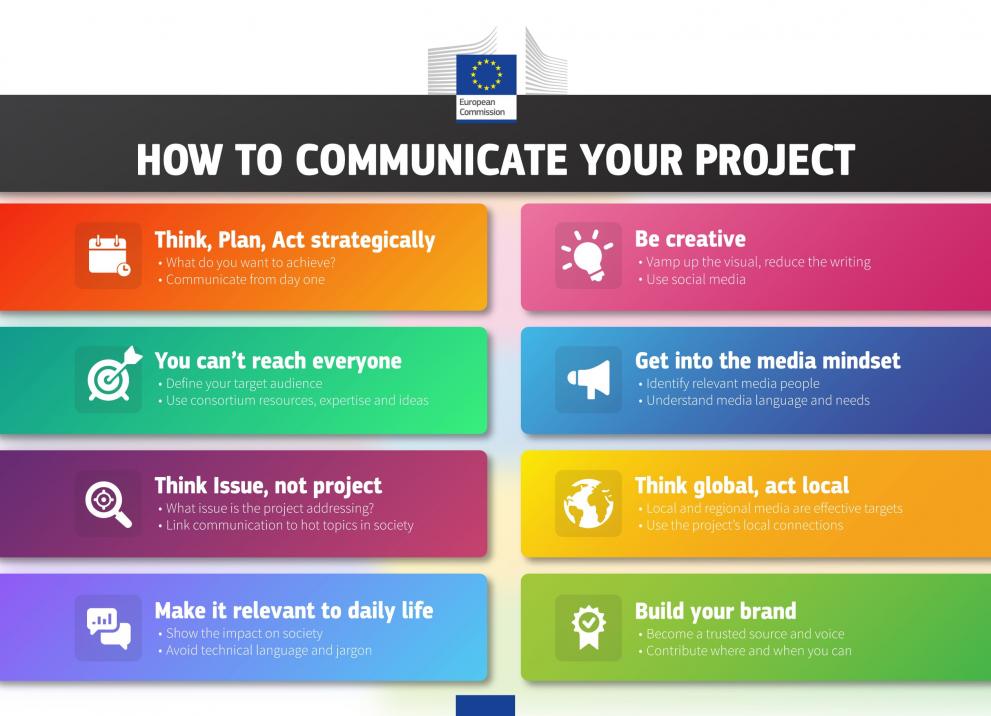Website
All LIFE projects are required to have a web presence (usually dedicated webpages as part of an existing website, or in justified cases a stand-alone website). It should provide details of the project's objectives, actions, progress and results, and it should feature the LIFE logo (and Natura 2000 logo for projects in Natura 2000 sites).
The website needs to be online within 6 months of the start of the project and should be updated regularly. We encourage projects to keep it online after the end of the project to maximize impacts.
- LIFE and Natura 2000 logos
- Principles of good design:10 golden rules in accessible web design
Examples of effective project websites:
Noticeboards
Also known as on-site panels or interpretation boards, noticeboards describing the project should be displayed in strategic places accessible to the public.
The LIFE logo should always appear on them. For projects which take place in Natura 2000 sites or promote the Natura 2000 network, the Natura 2000 logo should also appear.
- LIFE Bahar - noticeboard in situ
LIFE logo & funding statement
Communication activities of the beneficiaries related to the action (including media relations, conferences, seminars, information material, such as brochures, leaflets, posters, presentations, etc., in electronic form, via traditional or social media, etc.), dissemination activities and any infrastructure, equipment, vehicles, supplies or major result funded by the grant must acknowledge EU support and display the LIFE flag and funding statement "Co-funded by the European Union" (translated into local languages, where appropriate)
български | Download |
čeština | Download |
dansk | Download |
Deutsch | Download |
ελληνικά | Download |
español | Download |
eesti | Download |
suomi | Download |
français | Download |
gaeilge | Download |
hrvatski | Download |
magyar | Download |
italiano | Download |
lietuvių | Download |
latviešu | Download |
Malti | Download |
Nederlands | Download |
polski | Download |
português | Download |
română | Download |
svenska | Download |
slovenčina | Download |
slovenščina | Download |
The logo colours are:
- Blue: #004494; C 100, M 80, Y 0, K 0; R 0, G 68, B 148
- Yellow: #ffed00; C 0, M 0, Y 100, K 0; R 255, G 237, B 0
Natura 2000 logo
For nature conservation and biodiversity projects in Natura 2000 sites, you should also display the Natura 2000 logo.

Disclaimer
Please use a disclaimer whenever using the funding logo.
Co-funded by the European Union. Views and opinions expressed are however those of the author(s) only and do not necessarily reflect those of the European Union or CINEA. Neither the European Union nor the granting authority can be held responsible for them.
Networking
Projects are obliged to network with other LIFE and/or non-LIFE projects.
Networking activities can include visits, meetings, information exchange, and/or other such activities with an appropriate number of other relevant LIFE projects (ongoing or completed).
It may also include similar exchanges with other non-LIFE projects and/or participation in information platforms related to the project objectives (including at international level where justified).
Examples of effective networking
Social media
We also encourage you to share news and stories about your LIFE project with us through our social media channels - Twitter, Facebook, LinkedIn and Instagram
You can also send an email to CINEA-COMMUNICATION-LIFE ec [dot] europa [dot] eu (CINEA-COMMUNICATION-LIFE[at]ec[dot]europa[dot]eu) to inform us about your news or provide any material you may have (press releases, photos, videos, graphics, etc.)
ec [dot] europa [dot] eu (CINEA-COMMUNICATION-LIFE[at]ec[dot]europa[dot]eu) to inform us about your news or provide any material you may have (press releases, photos, videos, graphics, etc.)
Social media - #LIFEAmplifiers
Become a #LIFEAmplifier!
As a #LIFEAmplifier, our digitally-savvy LIFE projects will spread the word about LIFE's Programme's news, events and press releases while inspiring other LIFE projects to do the same. And we will promote your project on our social media channels, helping you reach a wider audience.
Join the campaign: Make your voice heard. Become a #LIFEAmplifier
At the end of your project
At the end of a LIFE-funded project, beneficiaries have to:
- Present the results of their project in a Layman's report, and
- Set out, in the After-LIFE plan, how they will continue to communicate the results after the end of the project.
Data protection
As of 25 May 2018, anyone who collects or in any way uses for professional purposes personal data of individuals must comply with the General Data Protection Regulation (GDPR).
Further advice and guidance
- How to communicate your LIFE project: watch the recording of our webinar
- 8 top tips for communicating your project:

- 25 JANUARY 2021
Download as a PDF


